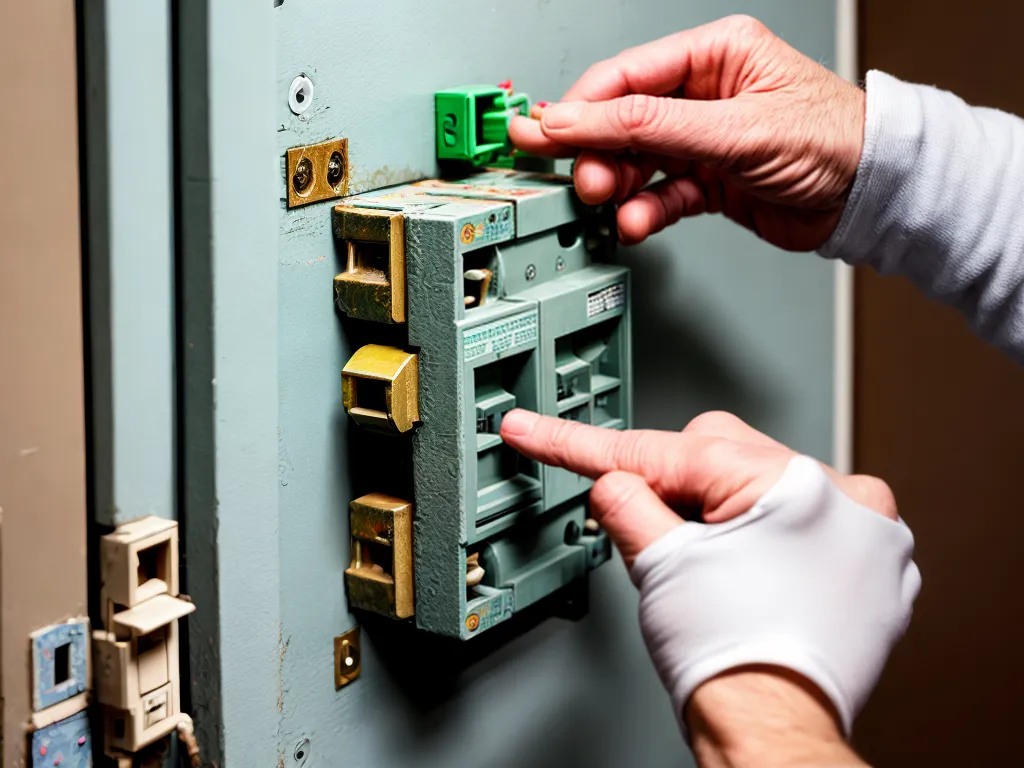
How to Troubleshoot Unreliable Circuit Breakers in Older Homes
Introduction
Having unreliable circuit breakers in an older home can be very frustrating. When breakers trip unexpectedly or fail to trip when they should, it leaves you without power in parts of your home and poses a potential safety hazard. However, troubleshooting finicky circuit breakers is well within the DIY realm. With some basic tools and a methodical approach, I can diagnose and often fix problematic breakers to restore smooth electrical operation in my older house.
Common Causes of Unreliable Circuit Breakers
There are a few usual suspects that cause older circuit breakers to malfunction. Knowing these common culprits helps me troubleshoot issues efficiently.
Worn Contacts
The internal contacts that connect and disconnect power can become pitted and worn over time. This can lead to poor electrical connections, arcing, overheating, and tripping at lower amp loads than intended. Worn contacts are one of the most prevalent reasons breakers start behaving erratically in older homes.
Dust and Dirt Buildup
Circuit breakers may operate in a protected panel, but dust and dirt still work their way inside over years of use. This debris can interfere with moving parts and contact points. A good cleaning is often one of the simplest solutions for an unreliable older breaker.
Corrosion
Corrosion from moisture or condensation inside the panel can also cause connection problems. Some discoloration or oxidation on contacts and internal parts may be visible upon inspection when corrosion is the culprit.
Loose Connections
The terminal screws that secure wire connections to the breaker occasionally become loose over decades of minor vibration and movement. These loose connections interrupt power flow and cause breaker issues.
Overloaded Circuits
When circuits are consistently overloaded over years of use, it puts undue stress on the breakers and leads to premature wear. Space heaters, window AC units, and outdated appliances are common culprits for overburdening home electrical systems.
Steps for Diagnosing Problems
With a basic understanding of what commonly ails old circuit breakers, I can now walk through diagnosing and fixing troublesome breakers in my 1960s era home. Here are the steps I take:
1. Check for Simple External Issues First
Before digging into the circuit breaker itself, I check for simple external issues like loose wires and overload sources. I turn off then gently wiggle each wire connection to see if any are loose. I also audit devices on the circuit and calculate total amp draw to check for overloads. I remove or upgrade high-draw devices as needed. This alone may resolve a “faulty” breaker.
2. Thoroughly Clean the Circuit Breaker
Next, I turn off power and remove the suspect breaker from the service panel. Using compressed air and an electronics cleaning brush, I carefully blow out and brush away any dust and debris from inside the breaker casing and components. Proper cleaning can allow the breaker's moving contacts and parts to operate smoothly once again.
3. Inspect Contacts and Internal Parts
With the breaker clean, I visually inspect the contacts and internal hardware for any signs of wear or damage. Light surface oxidation on copper contacts can be gently scraped away with emery cloth. Any pitting or grooving likely means the contacts need replacement. I check for loose rivets or damaged spring clips too.
4. Check Resistance for Proper Electrical Conductivity
Using a multimeter in continuity test mode, I check resistance across the breaker's contacts and verify it reads near zero ohms when closed. High resistance indicates worn contacts failing to properly conduct electricity, which requires a contact replacement.
5. Reinstall and Test Under Load
Finally, I reinstall the serviced breaker and test it under load with normal circuit demands. Often, cleaning corroded or dirty contacts and resecuring loose wires does the trick. If it still trips erratically, the contacts likely need professional replacement.
When to Call an Electrician
While many unreliable breaker issues can be DIY diagnosed and repaired, it's best to call a professional electrician if:
- The breaker frequently trips without overload when reset
- The breaker fails to trip when excessive load is applied
- There are signs of overheating like discolored plastic or melted wiring
- The issues persist after servicing and the contacts need replacement
- You are simply uncomfortable working inside the breaker panel
Paying an electrician for expert troubleshooting is wise if my DIY efforts don’t restore smooth circuit breaker operation. Safety should be the top priority when dealing with electrical issues.
Conclusion
With some DIY experience and proper caution, fixing temperamental circuit breakers in an older home is a very achievable task for many homeowners. Simply addressing dirt, corrosion, and loose connections can often get breakers working properly again. Seeking professional help is recommended when replacement parts or expertise are needed. With patience and diligence, reliable circuit breaker operation can be restored.